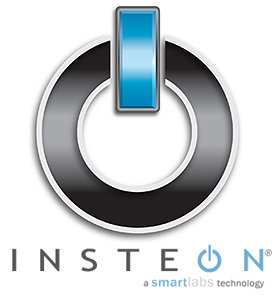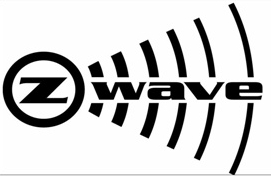Home Automation and the 'Internet of Things'
by Ganesh T S on October 4, 2012 10:30 AM EST- Posted in
- Gadgets
- Home Automation
- Wi-Fi
Electrical devices participating in home automation systems have to be integrated with some sort of communication protocol. These protocols may operate over powerline, RF or a combination of both. Some of these protocols are open standards, while others are proprietary (either belonging to a systems manufacturer or a silicon vendor). In this section, we will take a look at some of the major home automation options available to consumers.
Infrared Remote Control:
Infrared (IR) remote controls can be considered as the precursor of modern HA technologies. However, they are mainly used for point-to-point control flow. There is no bi-directional information exchange. Even though universal remotes have been around for a long time, their line of sight issues and non-interchangeability prevent them from being considered in the home automation space.
X-10:
True HA technologies require a HAN (home area network) where line of sight is not an issue and it is possible to have information flow in either direction. In the late 1970s, X-10 was developed as an international and open industry standard for home automation communication using power lines. A wireless radio based protocol transport is also part of the specification. More information about X-10 can be obtained here.
An X-10 network has transmitters, receivers and intermediate units which can receive and transmit X-10 commands. Transmitters are switches which send appropriate X-10 commands when activated, while receivers are devices which can shape the power delivered to the controlled devices (either as an on-off switch or by acting as a dimmer for a light fixture). Bidirectional devices can provide status and sensor information. A X-10 network can have up to 256 unique devices. Since the technology has been around for a long time, devices incorporating X-10 technology can be had for as low as $10.
Despite being simple and easy to configure, X-10 is slow (60 bps), has low reliability (particularly across circuit breakers and power line filters) and lacks encryption for security purposes.
UPB (Universal Powerline Bus):
PCS Powerline Systems (Northridge, CA) introduced the UPB protocol for home automation in 1998. It was based on the X-10 standard, but improved the transmission rate (480 bps) and provided higher reliability. UPB technology requires a router-like controller.

However, UPB doesn't seem to be an open standard. Despite winning a lot of people over from X-10 (because of its technical advantages), the technology continues to remain costly. The cheapest ones (such as wall switches) seem to retail for $75. UPB continues to enjoy support from CIs, but, it is doubtful whether users who want to install their own systems will opt for this technology.
ZigBee:
ZigBee, a pure wireless technology, is based upon the 802.15.4 IEEE standard for WPANs (Wireless Personal Area Networks). It is intended to be a low-cost, low-power wireless mesh network standard allowing for secure communication with a data rate of up to 250 kbps.

ZigBee was originally conceived as an alternative to Wi-Fi / Bluetooth around 1998 as a solution for self-organizing ad-hoc digital networks. ZigBee-based HA solutions operate in the 2.4 GHz range (though the standards allow for sub-GHz operation in the US and EU) and have a range of 70 meters indoors and up to 400 meters outdoors. The networks are self organizing, and any member can be the controlling node. There are plenty of ZigBee home automation solutions already available in the market.
Z-Wave:
Z-Wave, also a pure wireless technology, was developed by Zen-Sys, which was founded in 1999. In 2005, they initiated the Z-Wave Alliance, and the company itself was acquired in 2008 by Sigma Designs. The technology is similar at a macro-level to ZigBee in the sense that both are short-range wireless technologies which create a mesh network. However, while ZigBee operates mostly in the 2.4 GHz range, Z-Wave operates in the 900 MHz spectrum. Also, unlike ZigBee, Z-Wave is not an open standard.
Data rates can vary between 9.6 kbps and 40 kbps. Device pricing is also similar to ZigBee, with prices starting around $30. Both ZigBee and Z-Wave require a gateway to act as a master controller despite having mesh networking capabilities. Both of them can have up to 256 devices per network. Some Z-Wave controllers such as the Vera allow for combination of multiple networks to support more than 256 devices.
Insteon:
Insteon is one of the more recent home automation technologies. Like UPB, they are not a open industry standard. However, the technical capabilities have ensured its popularity. It was first deployed in 2005. One of its main plus points is the integration of both RF and powerline technologies for networking. The devices in a Insteon network operate in true mesh fashion, and so, there is no need for a special gateway / master controller (even though one is needed for web access). Data rates can vary between 2880 bps and 38400 bps depending on whether powerline or RF is used.

Like all other HA technologies described so far in this section, Insteon is used for small, low data rate transfers. Each network can have more than 16 million devices compared to the 256 possible in other technologies. One of the additional interesting aspects of Insteon is full compatibility with X10 devices. The pricing for devices incorporating Insteon technology starts at around $30.












54 Comments
View All Comments
southpaw42_i - Thursday, October 4, 2012 - link
Electric IMP looks to become big Home automation over next few years.Product developer will be able to add HA WIFI features to their products without the needed support cost of a managing the connection and the service themselves or the FCC validation of each product..
http://electricimp.com/
ganeshts - Thursday, October 4, 2012 - link
Looks like a very interesting product. I will be sure to investigate.jamyryals - Thursday, October 4, 2012 - link
Thanks for the article Ganesh, very interesting and I agree that this technology is starting to get more accessible. However, I must disagree with the statement that it's not possible to recommend products that do not have a documented API. Nest works great for me standalone. Why would the average customer need to connect it to anything else? My sprinkler system is automated as well. It won't turn on if it has rained. The automated door locks will open when I approach with my cell phones. I think the simplicity and predictability in how these devices operate is key for mass consumer adoption.I am a developer so there's nothing technologically in this realm that has stopped me from automating my house in the past. It's practical matters; cost and me becoming on call support in my own house. Anytime the lights don't come on the way they are expected to I'll have to go troubleshoot my devices/scripts.
If we had our wish we would get both simplicity and ultimate control. That's just not the way the consumer behaves though. Consumers will avoid poorly designed products that tout open APIs as a major selling point. People want things that work and they can understand.
ganeshts - Thursday, October 4, 2012 - link
I don't disagree with you on the point that Nest is a great device. If it were not, it wouldn't have achieved this much success.Products such as Radio Thermostat CT-30 and those from Visible Energy barely make a mention of open APIs in their marketing material. So, it is not that they 'tout it as a major selling point'. My intention, as a tech journalist, is to point out where products can improve. In that respect, I am a cynical customer for most of these companies.
To take the computing analogue, many users are satisfied with the Apple ecosystem, but there are a number of users out there who stand by Android for its open nature. Some journalists recommend and stand by Apple's products, while others are on the Android side of things. Both of them have a place in the market. Similarly, devices such as Nest will be popular in the market for some time to come because 'they just work' and people are enamoured by the appearance and usability. Just as Android continues to grow, devices which open up for ultimate control will give consumers better choices (particularly for the tech audience that makes up a majority of AT's readers).
Publications like Engadget, Gizmodo, Verge, AllThingsD (WSJ) provide lots of attention to products like the Nest. As a tech journalist for AT, I consider it my job done if consumers are at least made aware of the other more flexible options available.
bobbozzo - Friday, October 5, 2012 - link
"Nest works great for me standalone. Why would the average customer need to connect it to anything else?"I'd like to have my house open the windows and turn off the A/C when the temperature drops in the evening, and I'd prefer to do it with one application. I can program, but I'd rather have something available off-the-shelf.
shalomo1 - Sunday, October 21, 2012 - link
I am currently working on a project about home automation, I would like to meet and share ideas with you. this is my mail abraham.o@aol.com. ThanksCSMR - Thursday, October 4, 2012 - link
Good to have an article on this.Unfortunate that if there's a conclusion, it's that WiFi will become a suitable technology in 2015 with 802.11ah.
Very little is even known about 802.11ah. It's too early to say what it is, let alone whether it will take over low power networking.
I agree that: in the future, a low power wireless networking standard suitable for home automation will be standardized by IEEE and be called 802.11something.
Maybe there will be so many connected low-power devices that the new standard will be integrated into many wireless access points and routers.
What is unfortunate is that it will take years for this to happen.
ganeshts - Thursday, October 4, 2012 - link
Hmm.. low power Wi-Fi is only needed in a subset of HA devices. As I pointed out in the piece, there are already plenty of Wi-Fi based HA products and silicon vendors are providing low power platforms even with current Wi-Fi technology.noblemo - Thursday, October 4, 2012 - link
Bluetooth 4.0 Low Energy (BLE) is another protocol worth mentioning. It is a low-bandwidth, low-power technology that enables users to communicate directly to a device using a smartphone or tablet without the need for a separate controller or network connection. A self-contained sensor pod including a BLE module and battery can fit within a package about the size of a stack of six or seven 25-cent coins.In a pre-802.11ah world, Wi-Fi is better suited to high bandwidth or web-enabled devices with external power. In practice, I expect to see hybrid solutions using Wi-Fi and a second technology for remote, low power devices.
Chapbass - Thursday, October 4, 2012 - link
Hey, just wanted to take a moment to recognize Ganesh for his work. I know a lot of people are on the mobile device bandwagon and all of that, but I consistently find Ganesh's work to be unique, informative, and incredibly refreshing to this site.Keep it up, love reading it!